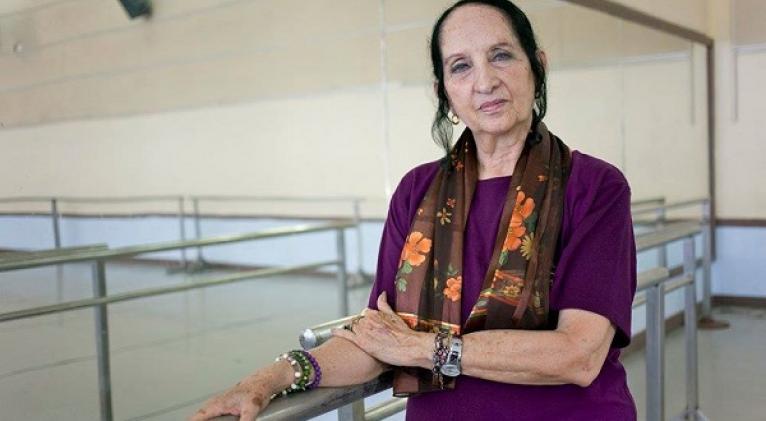
Ballet maître Ramona de Saá Bello, one of the most important figures in Cuban dance, died in April in Havana.
Known by her friends and admirers as ‘Chery’, she was one of the most prominent disciples of Alicia and Fernando Alonso and became the main teacher of many of the most renowned Cuban dancers of the last 50 years.
As director of the Fernando Alonso National Ballet School, her contributions to the creation and development of the Cuban method in teaching were immense.
She received the Cuban national awards for Dance (2006) and Artistic Teaching (2002), which are the highest level awards in Cuba.
Together with her sister Margarita de Saá, and those known as the ‘four jewels of Cuban ballet’ (Mirta Plá, Josefina Méndez, Loipa Araújo and Aurora Bosch), Ramona was part of the core group of dancers who accompanied the Alonsos in the re-establishment of the National Ballet of Cuba after the triumph of the Revolution in 1959.
Ramona soon had to abandon her career as a dancer due to serious injuries, but then devoted herself to teaching.
First as a teacher at the School that she founded together with Fernando, later as its director, for decades she helped develop Cuban ballet into an authentic, internationally recognized school.
Many top dancers identify her as their primary teacher. Carlos Acosta, international dance star, has paid her several tributes.
Carlos Acosta posted on his Instagram page:
Ramona de Saá will always live in our hearts as a result of her incredible and significant contribution to the Cuban dance world over her long and illustrious career, which so many Cuban dancers (myself included) have had the privilege to benefit from. We will never forget you Chery. Descansa en paz…
“Ramona de Saá Bello was one of the most prominent and multifaceted figures in the art of dance in Cuba and her work solidly supports the creativity and teaching of ballet,” the national network of art schools in Cuba (CNEArt) said in a statement after her death. “The legacy of Maestra Ramona de Saá goes beyond the artistic; she is and will always be an example of dedication, of moral and ethical strength, of simplicity and altruism.”
In an interview in the Cuban press in March 2020, Ramona de Saá said:
“One of the things that keeps us all awake, connected, excited, committed to life, hopeful about the future is art, the possibility of appreciating art. The work that this country has done in the training of artists has been so important that we have incredible strength in that sense.
And she added: “I greatly admire that capacity of Cuban art in all its manifestations to move us. And I feel very responsible to transmit the immense legacy left by the great teachers. In the case of ballet, our dear Alicia, Alberto and Fernando Alonso.
More about Ramona de Saá
Ramona de Saá was born in Havana, on July 23, 1939. She studied at the Alicia Alonso Academy.
With the National Ballet of Cuba she reached the role of soloist.
She was the promoter and founder of the ISA (University of the Arts) Dance Art Course in Havana.
When the Ministry of Culture was created, she was promoted as national methodologist of the Directorate of Artistic Education (which later became CNEArt).
Along with her dedication as a teacher and lecturer at a national and international level, she never stopped teaching classes at the National Ballet School.
For her extensive teaching work, she received the Raúl Gómez García distinction, the Jesús Menéndez, José Tey and Alejo Carpentier medals (2001), as well as the National Dance Awards (2006) and the National Artistic Teaching Awards (2002) and the Félix Varela Order.

You must be logged in to post a comment.